2/1/25
Really? It's been a whole year + since I've posted here. While I just returned from West Africa, that was/is 2025. Images from last year were still largely travel-related, with journeys in the Southwest and the Balkans, plus a few local spots as well. As usual, I tried some camera-movements, multiple exposures and even some layering of images in Photoshop. Keep the creative juices flowing I say. As usual, it wasn't too challenging whittling a thousand or more images down to twenty or so. But then getting to 15, 12, and finally 10 was hard. But the trooper that I am, I got there. So, here are my ten favorite images of 2024, five from the Balkans, including the three spiritual ones on the top row; three from the SW road trip, including the Grand Canyon; and two local - the Black and white Ocotillo at sunset, and the De Grazia Gallery interior image.
My favorite - the DeGrazia image. Somewhat abstract, colorful for sure, asymmetrical, and just pleasing to my eye. A bunch of close seconds, especially the images of Icons. All in all, a good year in retrospect photographically. We'll see what the new year brings (besides Africa!).







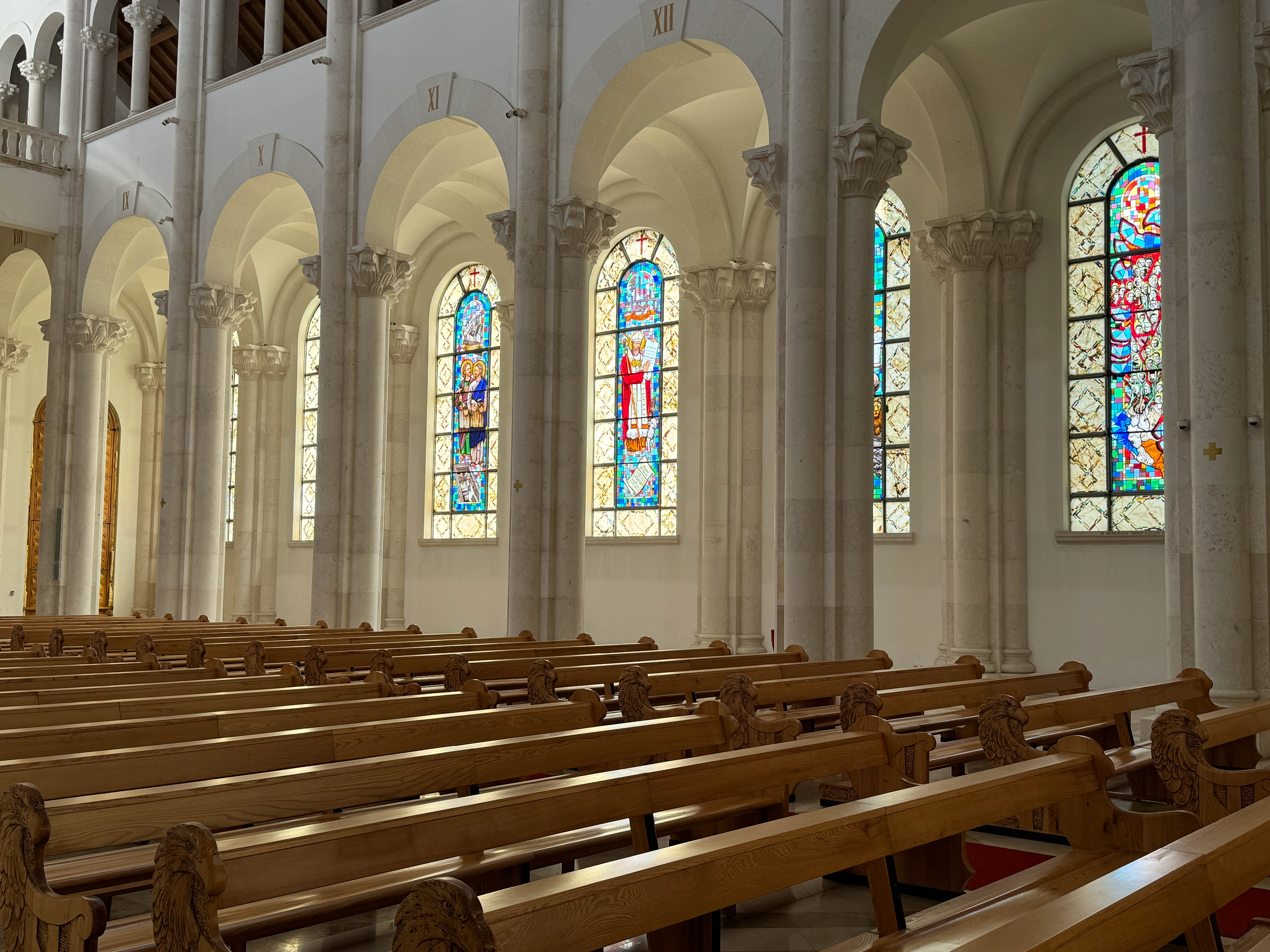


1/2/24
It's time for my annual review of my images created during the past year and selecting my favorite ten. I began the effort this year with the fear that I couldn't find ten images worth even considering. It was a year involving three multi-week trips but not much else concerning photography. Just one of those years of questionable creativity. But, thankfully, I proved myself wrong (at least I feel that way - you may feel otherwise!). Starting with several thousand images, I quickly whittled it down to eighteen or so that I felt were pretty good. Then came the hard part of any editing exercise - continuing the edit down, down, down to the final ten. And so, without further ado, here are my personal favorite ten images of the year. Six from Arizona, one from Japan, one from Luxembourg (the Cathdral), and two from England (Parliament and the Mondrian exhibit at the Tate Modern). Only one showing motion (the door front from the Barrio here in Tucson), one using a special filter in Silver Efex Pro 2 (London's Parliament Building), three converted from color to Black and White, and few straight-on. Five architectural, four classic landscapes, one with flowers (Takayama, Japan)! Someday I'll figure out my true style!
And which is my favorite? It's between the Saguaro Sunburst and the Monument Valley panorama. Both desert images, one in full color, and the other in darken monochrome. But given the uniqueness of the image (right place at right time with right camera and right vision), I have to go with the Saguaro Sunburst.
So onward to 2024!

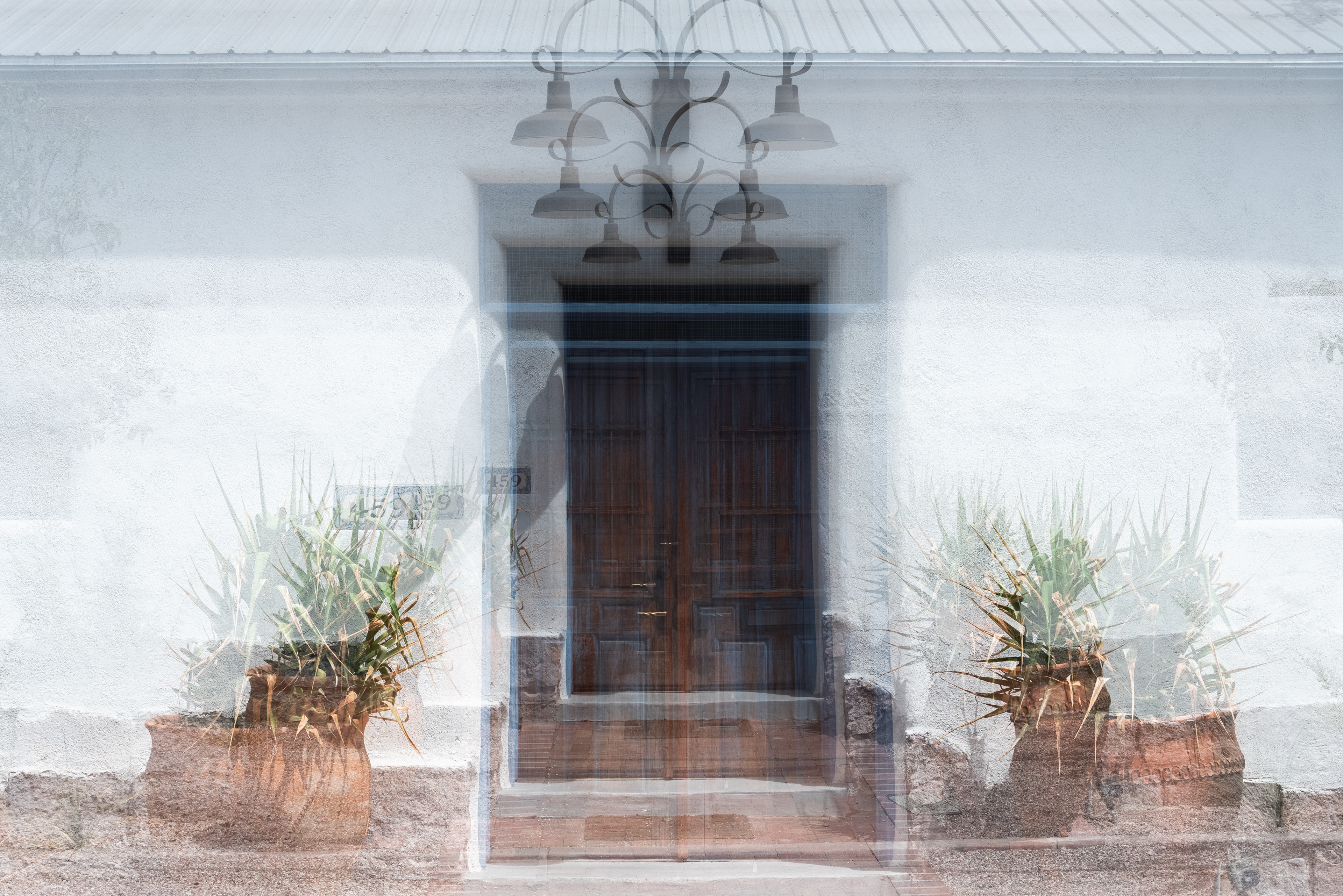
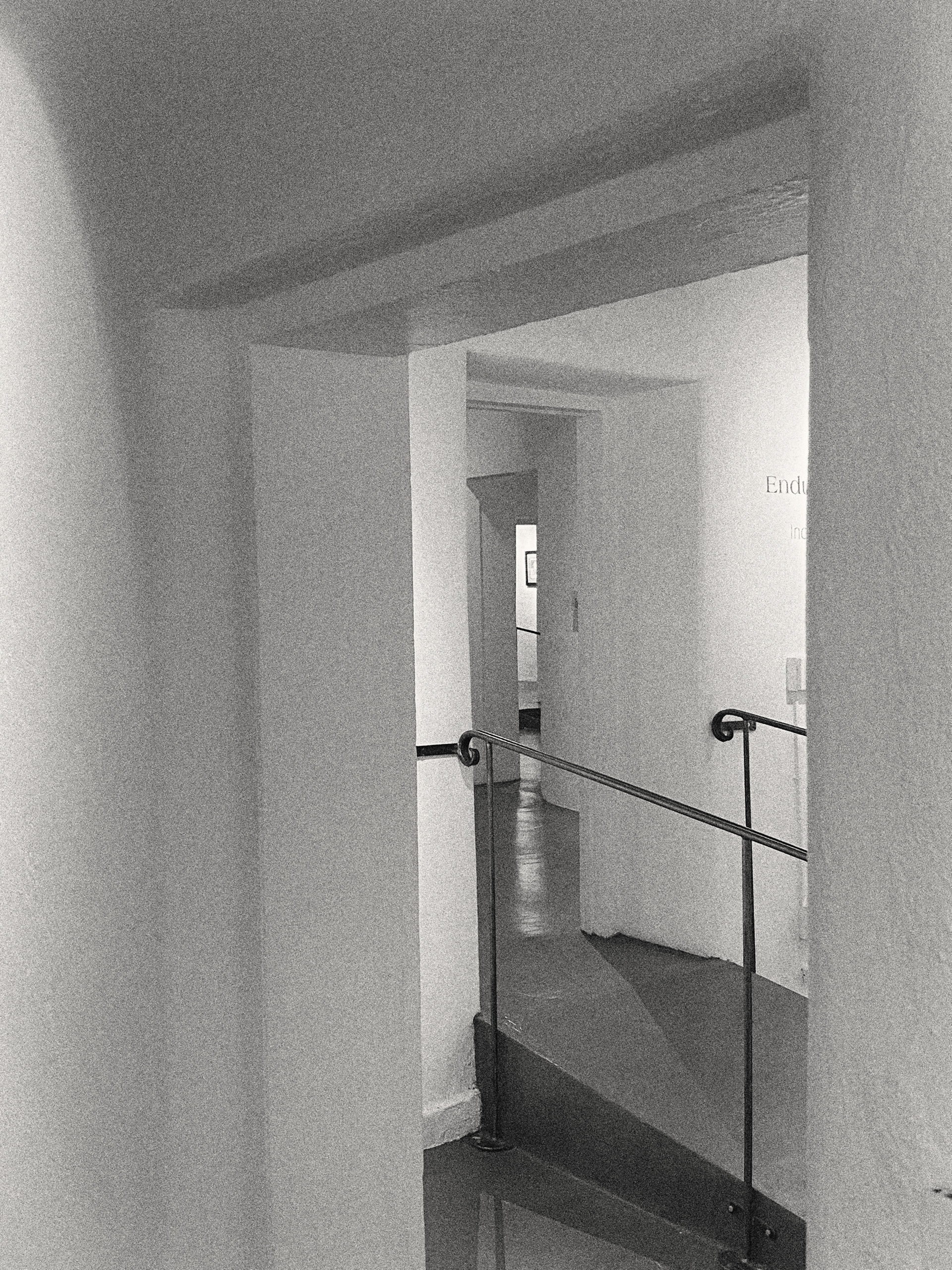
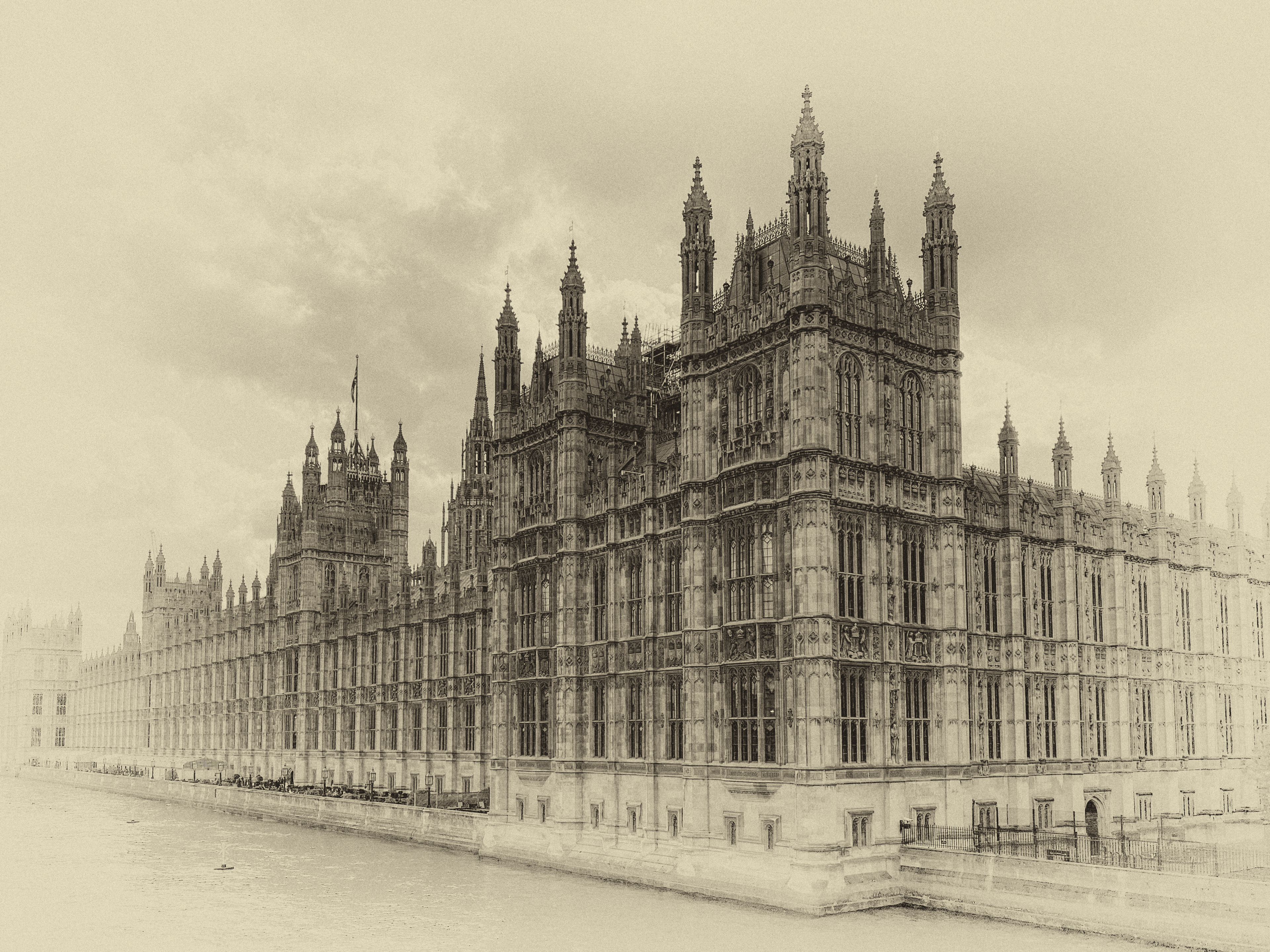


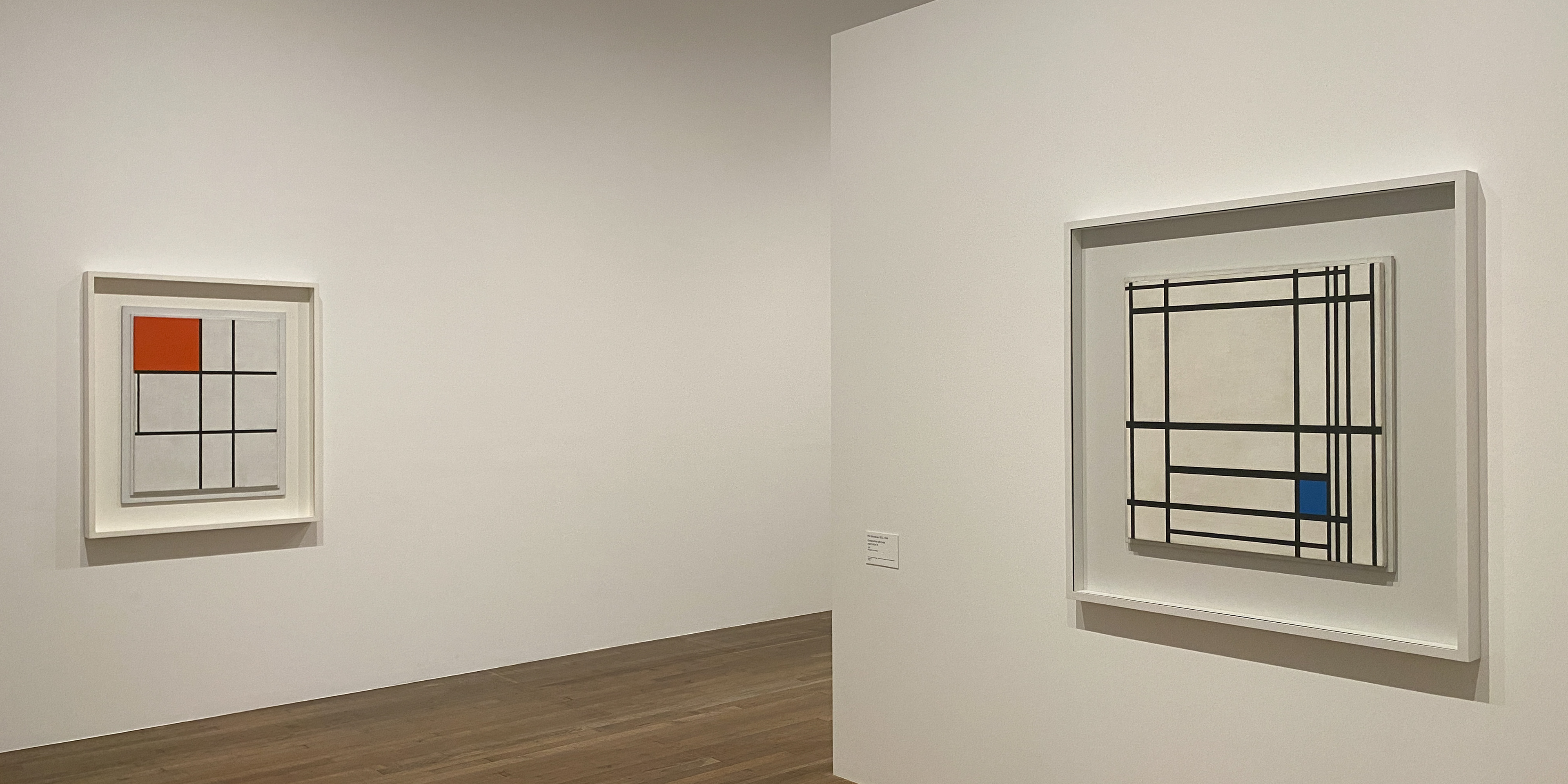



11/7/23
Is Photography Dead?
An interesting podcast discussion among three photographers/artists/collaborators concerning photography, artificial intelligence, and authenticity. The podcast co-host, MH Rubin, argues that there's really no way to authenticate photographs anymore so photograph really doesn't exist anymore. Images created with a camera are really something else unless no manipulation is used (which includes Photoshop, cropping, et.al.) Hmm.
Reminds me of discussions less than a century ago as to whether photography is art. Perhaps, more than ever, it really is! Or the artform formerly known as photography. Hmm.
https://share.fireside.fm/episode/3S8S-W4d+hY6v1XBf
3/9/23
I came across this portrait series this morning by Marna Clarke that really spoke to me as I age as well. The text and photos are so moving. Highly recommend.


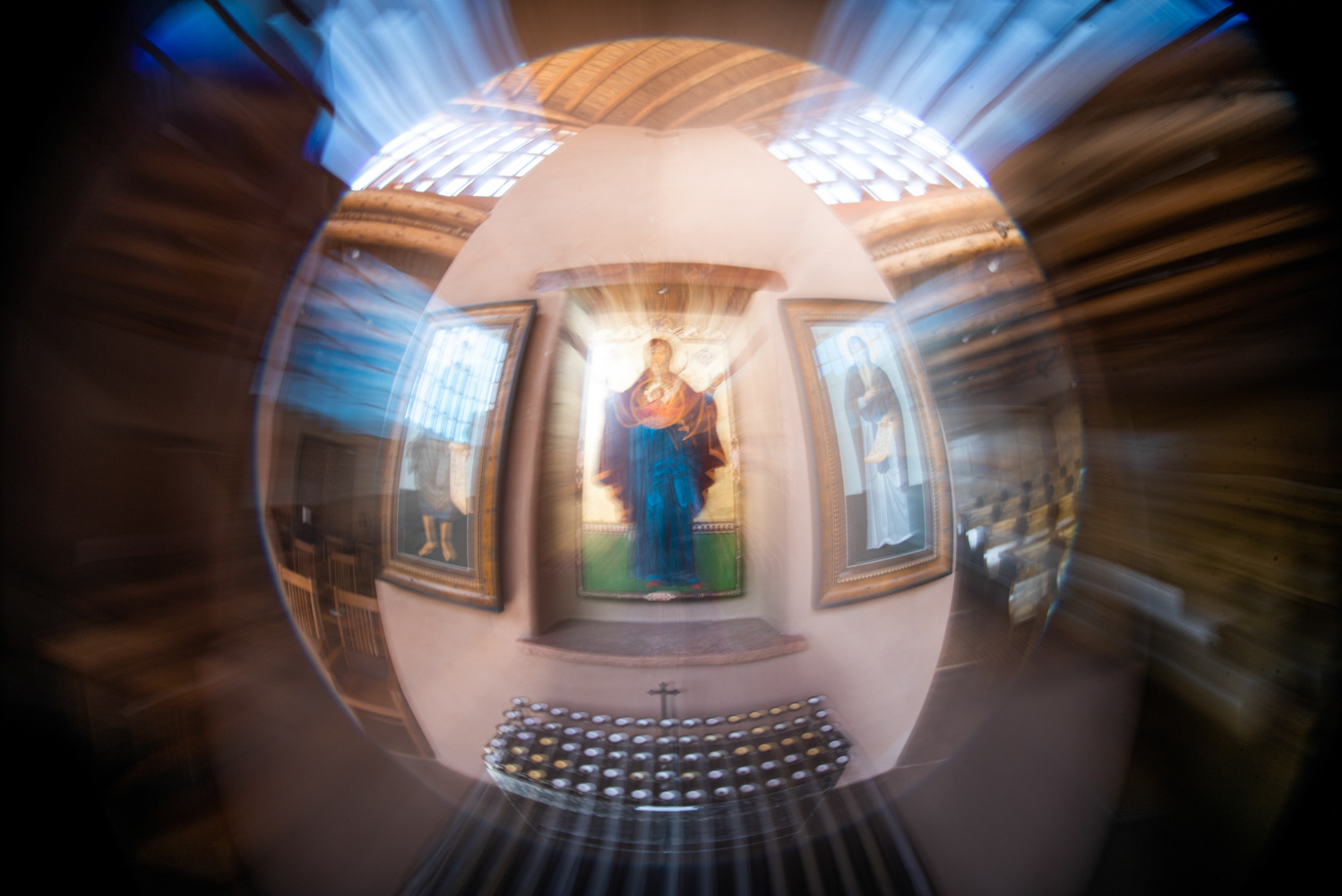







1/1/23
It's time for my annual review of my images created during the past year and selecting my favorite ten. I guess I should be thankful that it's not an easy task - not that I don't have at least ten that I consider good, but that I have to pick and choose among a larger group of photos. Of this year's selection, only one was taken in Tucson, and that was part of an assignment of workshop that I was taking. The other nine are from trips to the Pacific Northwest, Christ in the Desert Monastery in New Mexico, and Egypt. Three deserts, two zooms, one on the air and one from a ferry. Two at night, four with a distinct spiritual component (though one could say that all ten have that!). Four black-and-white, six color. Only one interior, nine exterior. And one in the midday sun!
The other part of the annual exercise is selection of my two favorites. Always hard to keep my emotions out of the editing process and the stories behind a given image. A lot about photography is serendipity - right place at right time with camera in hand. And some is about having a vision and carrying it out. So I've selected three as my "bests" for the year instead of two. The first is from the right (or in this case left) seat on the 737 at the right time approaching SeaTac with Mt. Rainier rising about the clouds. The second, from the same trip, is of downtown Seattle with dissipating fog. I was headed to Seattle from Bainbridge Island with the plan to add to my Seattle photo collection. The fog was heavy leaving the island but I hoped that as we approached Seattle it would be lifting. So I positioned myself near the front of the boat and, wala! The final photo is of the Wishbone Diner in Tucson. I had passed this fast-food restaurant on Speedway many times and thought of Edeward Hopper's Nighthawks, a favorite painting of mine. I finally went there one evening in January and turned vision into image.
So, in yet one more final decision, I think, at least as a write this, that the Wishbone Diner image is my favorite of the year. Simplicity and timing, and perhaps a little bit of skill.
I encourage you to take on this annual effort and see where your photography has taken you in the past year.
10/24/22 II
This morning, I finished reading "Photographers on Photography: How The Masters See, Think & Shoot" by Henry Carroll. In a little over 100 pages, the author discusses a quote from each of fifty photographers on their craft accompanied by one or several of their images. Some of the photographers are well known - Dorothea Lange, Ansel Adams, Richard Avedon and Edward Weston, for instance. Most I've never heard of - Fay Godwin, Todd Hido, Lisette Model. Some of their work I love; others, well, may speak more clearly to other viewers! But all are thought-provoking in both their prose and their images. A few quotes:
It's way more important to know how to take a picture than to use a camera. - Olivia Bee
A photograph is usually looked at - seldom looking into. - Ansel Adams
If in your heart of hearts you want to take pictures of kitties, take pictures of kitties. - Alec Soth :)
I really commend this book to you for insights, beautiful and provoking imagery, and selected interviews. Even if you only create images of kitties.
10/24/22 I
I've always loved the simplicity and tranced beauty of the dance of the Whirling Dervish. I've seen several Dervish rituals in person over the years as they embody their ritual dance; it's not a performance or an act but spiritual movement that takes them into a deep connection with the Spirit. While I've tried to capture some emotional connection through photography of their ritual, I'll admit is challenging. A few years ago, I was watching a video of the ritual and was captivated by the imagery, to the point where I captured several screen shots that I've subsequently edited in Lightroom. I love to fluidity of the ritual and the almost translucent effects of the lighting on their robes. While I was not the original creator, the images I pulled from the video and the editing that I did resulted in images that speak so eloquently to me. And perhaps to you.




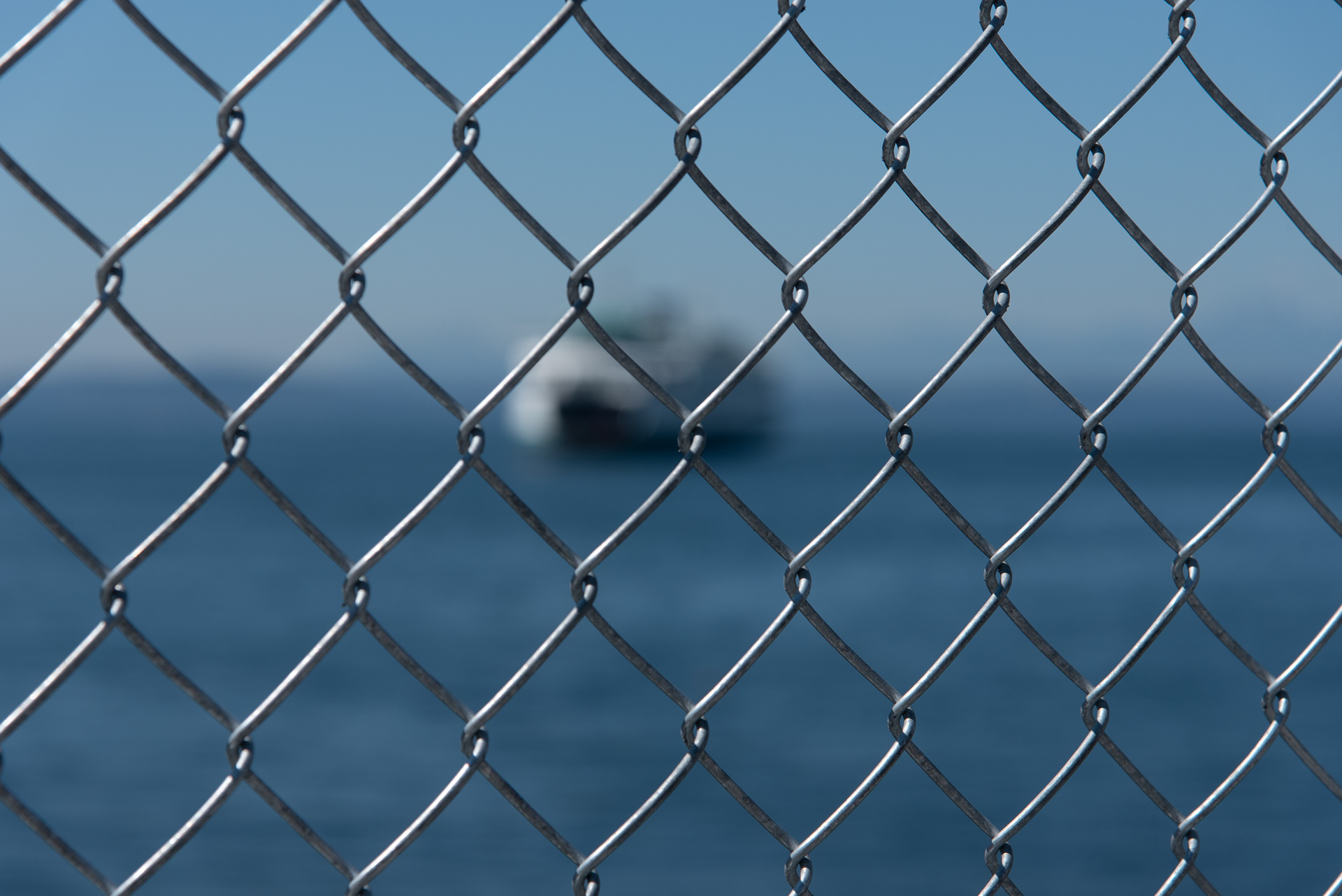

8/26/22
Selective focusing makes a big difference! Do you focus on the nearby object and let the background blur or vice versa? Are you imprisoned watching a ferry in the distance? Or taking a photo of a ferry through a fence? Different meanings, right?

Original
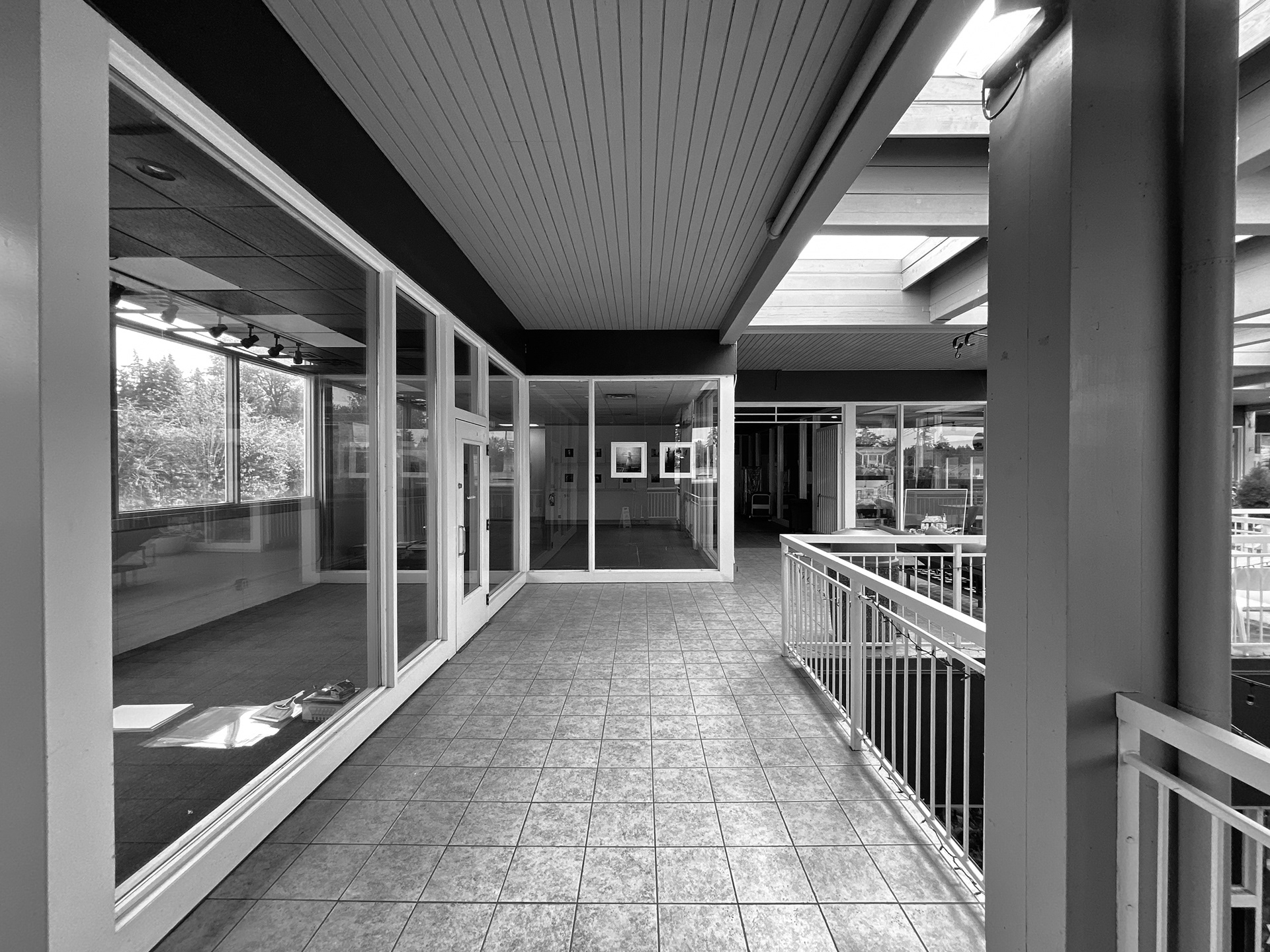
Classic Black and White
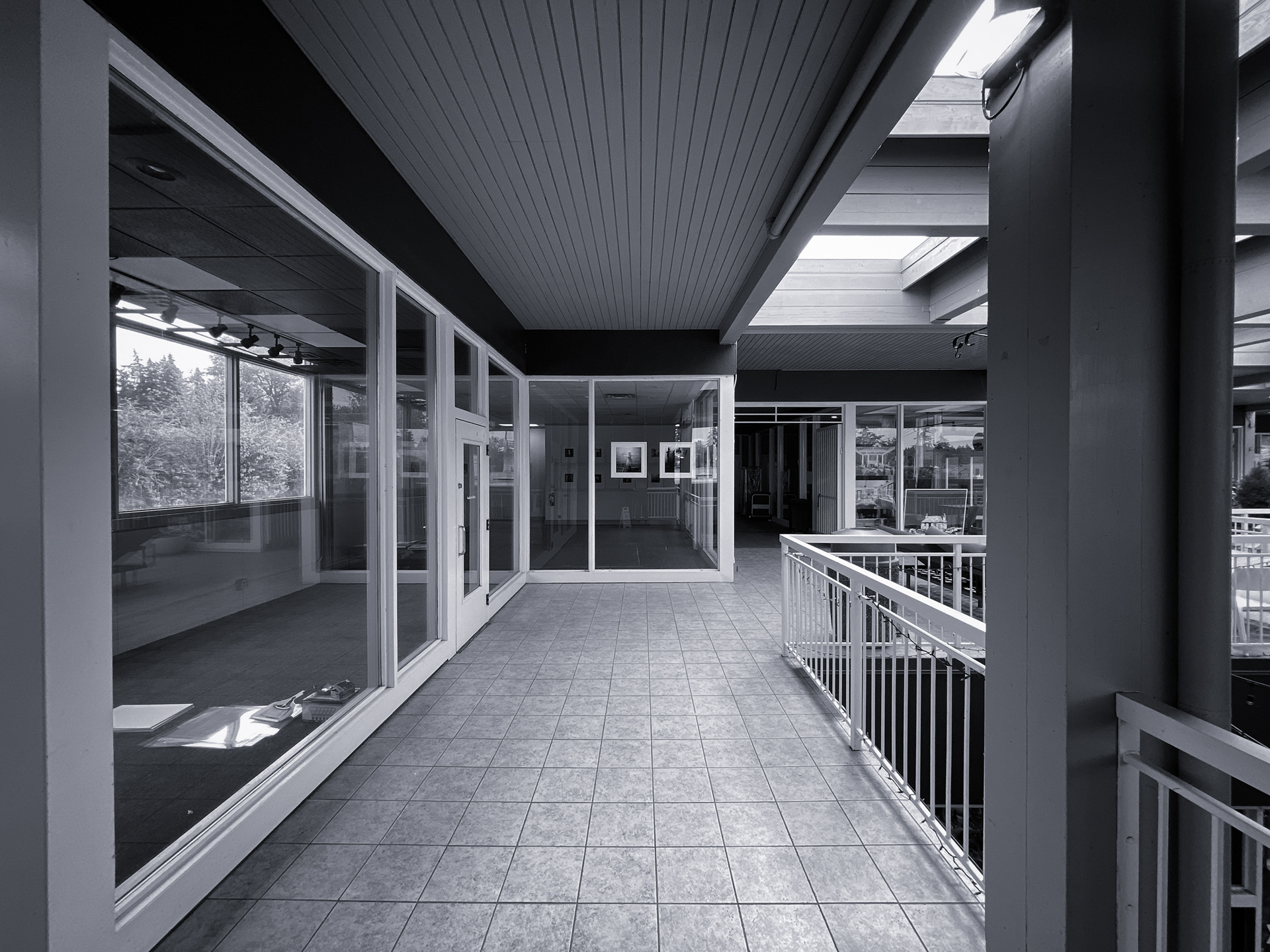
Stressing the Greys

Stark, In Your Face

Yesteryear
8/25/22
I've been experimenting (OK, playing) with various filters to amplify the mood of photographs. Especially tricky when you're talking about architectural work. Can you really change the mood of a structure by changing the quality or color or luminescence of light? Well, yes. Using presets in Silver Efex Pro 2, I tried various filters on an image taken at a small mall in downtown Bainbridge Island, WA to see how the feeling would change. Results on the left.
The original was pleasing to me with subtle colors and strong geometry. The basic black and white image really began to bring out the strong lines. Next comes the greyer version which conveys strength. Fourth is the blown-out version with its emphasis on the whites and is certainly the most edgy of the five. Finally, the yesteryear version in sepia.
Each has a purpose. And there are plenty of other variations possible. All depends on the vision and the use planned. As usual, its important to get the original photograph as good as possible in camera. After that, the potentials are almost limitless.


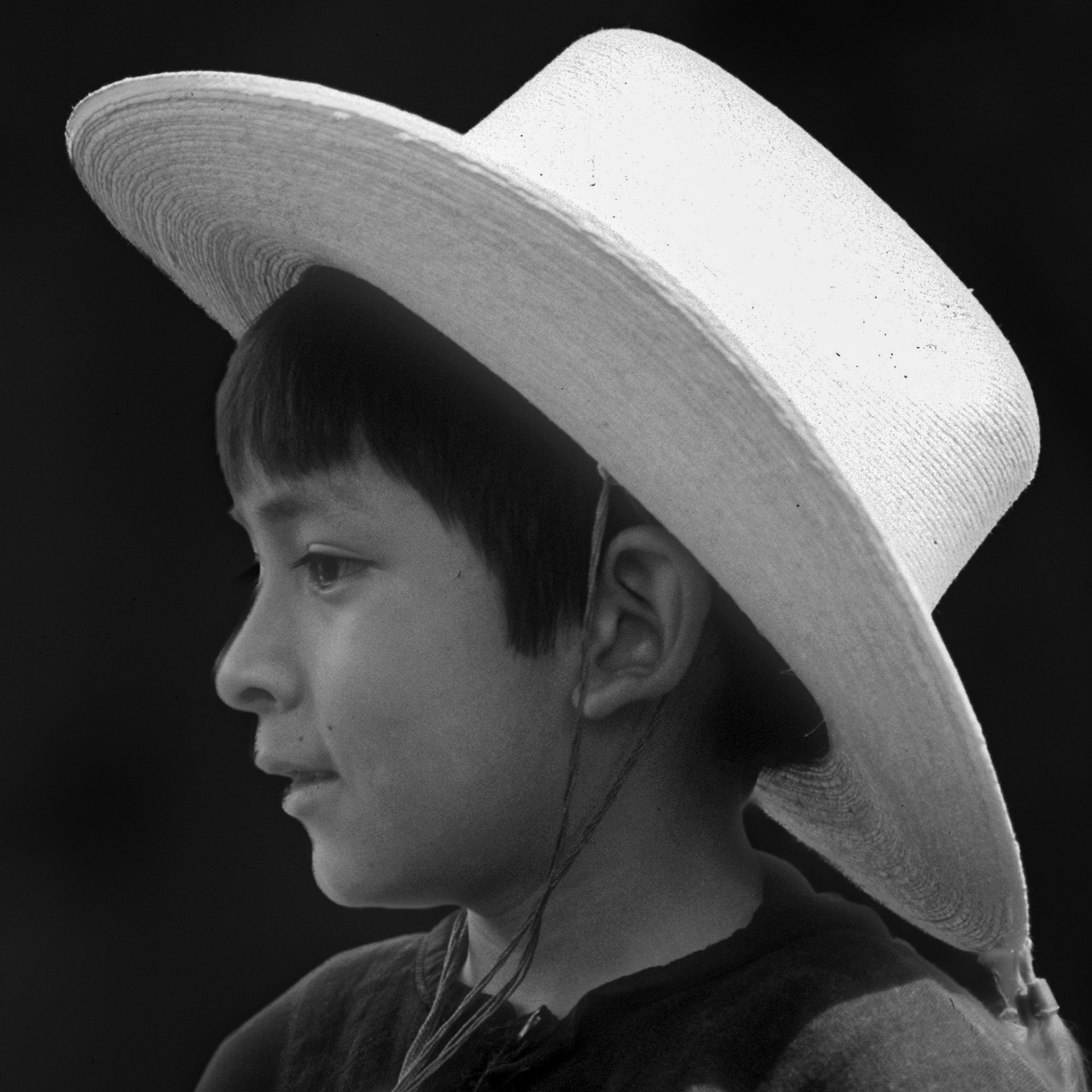
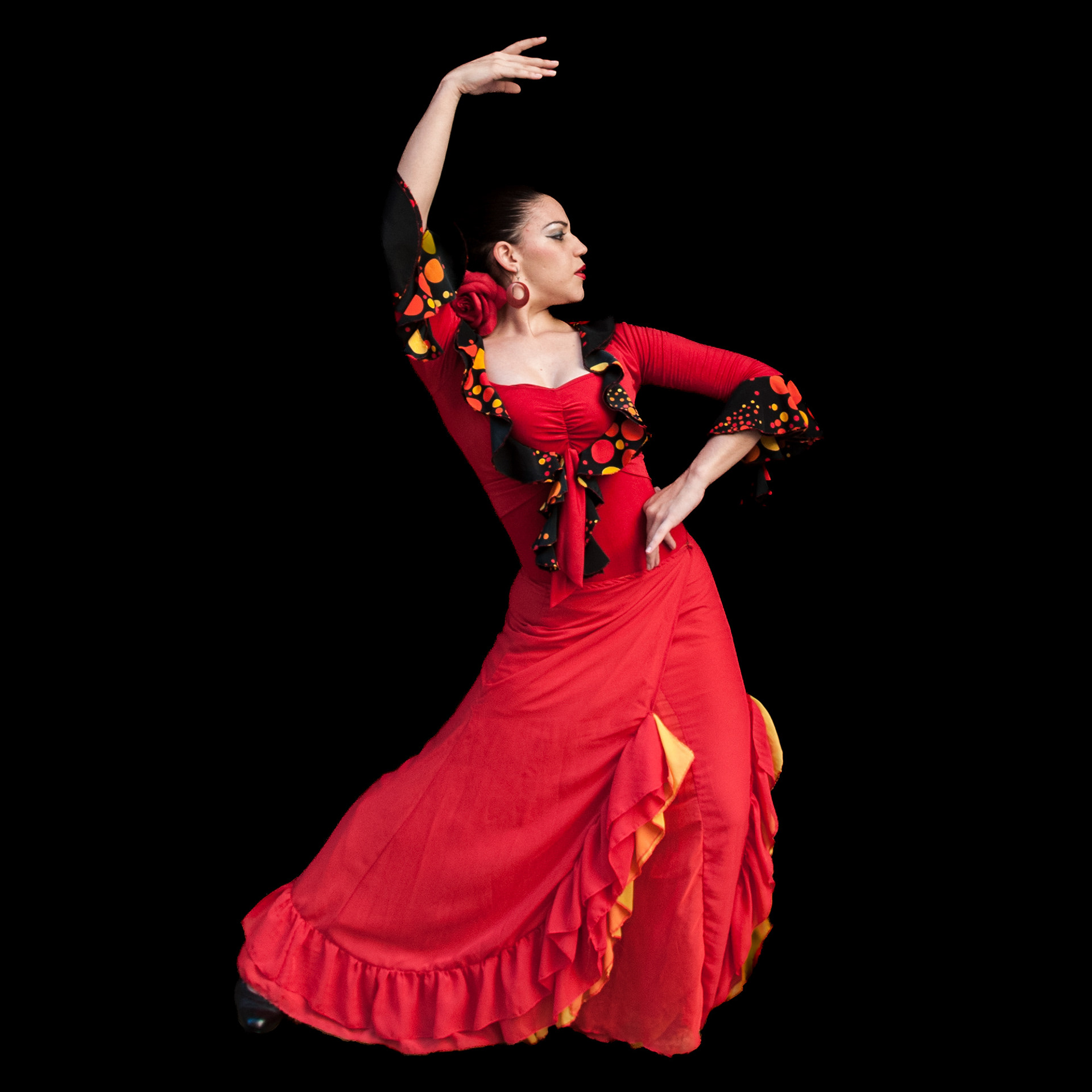





7/7/22
Adobe Lightroom is my go-to application for photo editing. And the latest version has an amazing AI (artificial intelligence) feature that quickly selects an image's subject or sky with just a single click. It's not always perfect, sometimes including more than it should or not finding a subject at all (even if it appears obvious!!). But generally speaking, it usually does an very accurate selection when working with portraits. It then allows you to adjust exposure, contrast, highlights, shadows, saturation, vibrancy, etc. for either the subject, or with two more clicks, the background rather than the subject.
I've been experimenting with environmental portraits (those taken outside of a studio with all types of backgrounds) and turning them into more of a studio version with black backgrounds. This has been a complicated chore in the past especially when dealing with hair, with its inherent split ends, et al!). Now with several clicks into an inverse mask (technical speak that you really don't need to know!) I can now totally underexpose the background, turning it black, and then moving the black slider all of the way of left to further blacken the background. And, voilà, the subject pops against the black background.
You might ask, is this "cheating?" Not really. I'm not removing items from the image which can be done with other digital techniques but which I generally don't advocate and certainly cannot ethically be done in photojournalism) but merely doing what one used to do it a darkroom by dodging (or underexposing) portions of an image. This would have been very difficult in the past again focusing on very specific elements of a photo like hair. So, I'm OK with it! And if you're not, that's OK too!
12/31/21
An annual exercise of mine is to review all of my images created during the year and selecting my favorites in no particular order. And then selecting my top two. Obviously, the selections are my personal choices and you may or may not agree that they're my best or even very good by your aesthetic standards! And that's fine. What I hope is that you review YOUR photos from the past year and see where you've come from and where you're headed photographically.
So, here are my ten favorites of 2021. The first two images are of California's Salton Sea. I'm always enamored with openness and there's nothing much more open, or perhaps even desolate, than this area.
The second set of images are of the Sonoran Desert here in Arizona. I've become very partial to Saguaros after many decades in the Pacific NW. And if there's a theme to my photos, its open spaces.
The next four are from our cross-country car trip this past October. Three natural settings and finally a human-made structure in the form of the St. Louis Gateway Arch. I personally love the sunbeam cutting diagonally across the image and the arch.
The final image is of a fighter jet at a local air show this past November. The aircraft's angle and placement within the frame, the gray space, the faint exhaust all denote sheer power and speed.
So, which two of these favorites are my favorite favorites? Hmm. OK, well, it's challenging to select just two. But for the sake of my exercise here, I'll go with the sepia Saguaro in the center of the grid (also shown larger in the 11/14/21 blog post below) and the black-and-white Gateway Arch photo. The former because it's my favorite saguaro photo so far in three plus years of living in Tucson. The latter because of the dramatic graphic of the sun ray and the curve of the arch. Not my usual type of image - always good to break the mold from time to time!

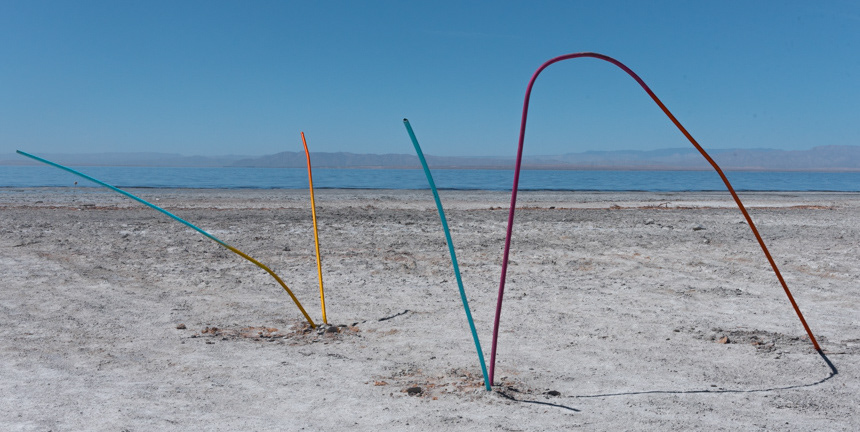

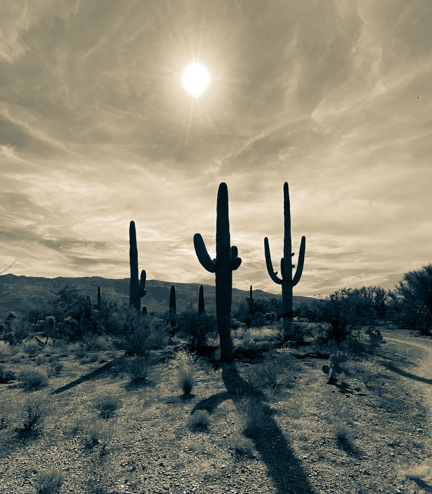




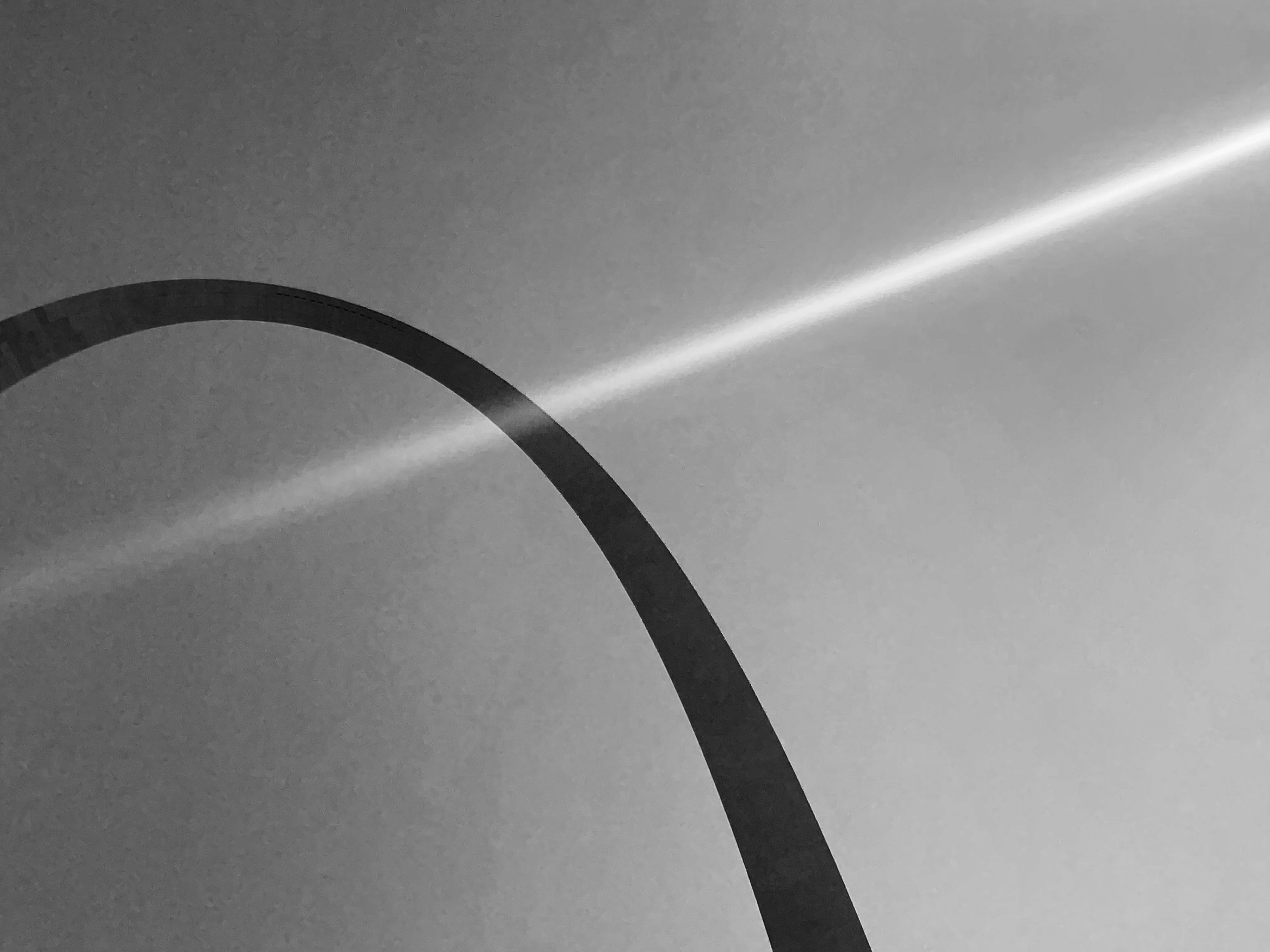

11/14/21
There's the all too rare occasion when an image wows us when we're not expecting it. I was recently walking in Saguaro National Park East in Tucson, mid-morning when the light was not obviously great and with "only" my iPhone 11 Pro with me. Creating images wasn't really on my mind. But ... being in the right place at the right time; throwing in some serendipity with sky, silhouettes and shadows; and applying an unusual filter in Lightroom (split tone) resulted in what was for me an image that's now among my very favorites.
9/27/2021
Just completed reading an amazing book on the famous photographer of Native Americans, Edward Curtis. The book, "Short Nights of the Shadow Catcher," by Timothy Egan, was so well written and engaging that I finished it off in a time frame reminiscent of fiction books by Gresham and Creighton which is definitely high praise for a non-fiction read. While there is some controversy about some of Curtis' techniques, which are addressed in the book, the single-mindedness of Curtis in documenting a changing way of life and existence is compelling. Highly recommended!
5/2/2021
After over a year without traveling - we were/are in the same boat, right? - we finally headed to San Diego, La Quinta, and the Salton Sea for a week. While most of the trip was just to reacquaint ourselves with the joys of traveling, it was the Salton Sea that peaked my photo curiosity. On a hot April morning, with temps touching the 100 degree mark, the Sea was every bit as desolate as I expected, and every bit as fascinating. At our first stop along the northeast shore, with the salt-encrusted shoreline, brackish water, and mountains looming to the west, I captured this image. While OK, it certainly did not reflect how I felt
So, when I got home, I applied a filter using Silver Efex Pro 2 to covey the true feel of the place as I perceived it. A much different sensation, a sense of parchedness, of older times, of heat and desolation. I tend not to use specialized software filters very often, but in this case I knew the I couldn't get across the feeling I had while composing the photo without help later on. The tools of photography are there for a reason: to make the image yours.